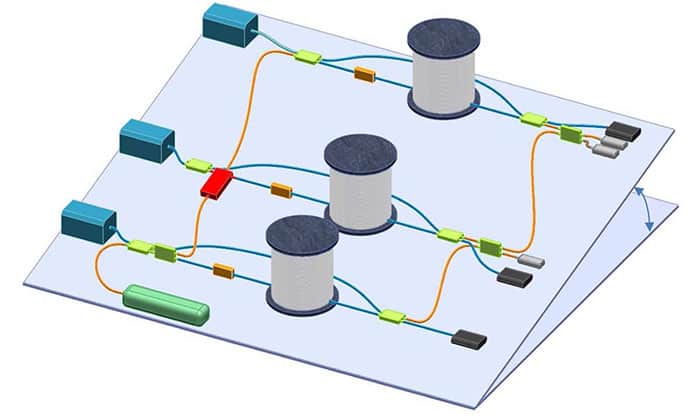Flash Physics is our daily pick of the latest need-to-know developments from the global physics community selected by Physics World‘s team of editors and reporters

STEM students reveal misconceptions about teaching
Science, technology, engineering, and mathematics (STEM) students have misconceptions about teaching that may lead them to other careers. The American Physical Society (APS) surveyed nearly 8000 undergraduate and recent-graduate STEM majors. It found students underestimate the average annual salary of a US-based STEM teacher by nearly $17,000, believing it to be closer to $42,000 than the real figure of around $59,000. Students also thought that misbehaving pupils would be an aspect that teachers most dislike (rather than an unresponsive administration and non-teaching activities). The report says that both misconceptions could be reversed if STEM faculty members discuss teaching careers with students, including salary prospects and the positives and negatives of the job. “There appears to be a strong association between students expressing some interest in teaching and faculty who simply discuss it as a possibility, independent of whether they are favourable about it or not,” says contributor Michael Marder from the University of Texas at Austin in the US and executive director of UTeach. Other recommendations in the report include providing financial help to those pursuing teaching in STEM subjects and introducing support programmes to improve the community among STEM teachers. “[The survey] uncovered a lot of perceptions about teaching that we need to be very sensitive to at the undergraduate level,” says Rebecca Vieyra, K-12 programme manager at the American Association of Physics Teachers, who was not involved in the study. “We need to make sure that people see STEM teaching as a STEM career and not something that is outside of it or something that is below it.”
Bouncing rocks define asteroid’s surface

The segregation of small and large rocks on the surface of the asteroid Itokawa can be explained by how particles strike the surface of the irregularly shaped object. Resembling a knobbly potato, Itokawa is just 540 m long. It has a surface that is demarcated by low-lying regions containing fine dust and small pebbles, and highlands that are dominated by large rocks as large as 40 m across. Now, Troy Shinbrot and colleagues at Rutgers University in the US and the Okinawa Institute of Technology in Japan have done computer simulations and experiments that suggest that this distinct landscape was created by differences in how different-sized particles behave when they strike the surface of the asteroid. The team looked at what happened to glass beads when they are dropped onto rocky surfaces. The work suggests that when a small particle strikes a large rock on the surface on an asteroid, it will bounce and then land on another region of the asteroid. However, if a small particle strikes a region that contains small rocks and dust, much of its kinetic energy will be absorbed and it will not bounce – but remain in that region. As a result, the regions of Itokawa that contain large rocks remain clear of smaller rocks, which tend to congregate in other regions. The work is described in Physical Review Letters.
Gravity’s effect on single photon could be measured

A scheme to measure a gravitationally induced phase shift on a single photon has been proposed by physicists in Austria and the US. If built, the experiment would involve a variation on the conventional Mach–Zehnder interferometer (MZI), which splits light into two signals that take two different paths before being recombined at a detector. If a MZI is set-up so that the paths involve a change in elevation, light travelling along the paths would experience small changes in the Earth’s gravitational field. This results in a small shift in the relative phase of the light signals when they reach the detector. Unfortunately, a MZI that covers distances of several thousand kilometres would be required to see this phase shift. Now, Christopher Hilweg and colleagues at the University of Vienna and Massachusetts Institute of Technology have shown that it should be possible to see a phase shift in single photons using a variant of a MZI with three different paths. Instead of covering huge distances, each path would involve light travelling around a different spool containing about 100 km of optical fibre. Employing three paths allows the experiment to be operated in a time-varying mode that the team argues would reduce the influence of noise in the fibre on the measurement. By carefully shielding the interferometer from environmental noise such as thermal fluctuations – and by carefully aligning it to minimize the effects of Earth’s rotation – the team reckons it could measure a gravitationally induced phase shift on a single photon. The proposal is described in New Journal of Physics.
- You can find all our daily Flash Physics posts in the website’s news section, as well as on Twitter and Facebook using #FlashPhysics. Tune in to physicsworld.com later today to read today’s extensive news story on twisted plasmons.



